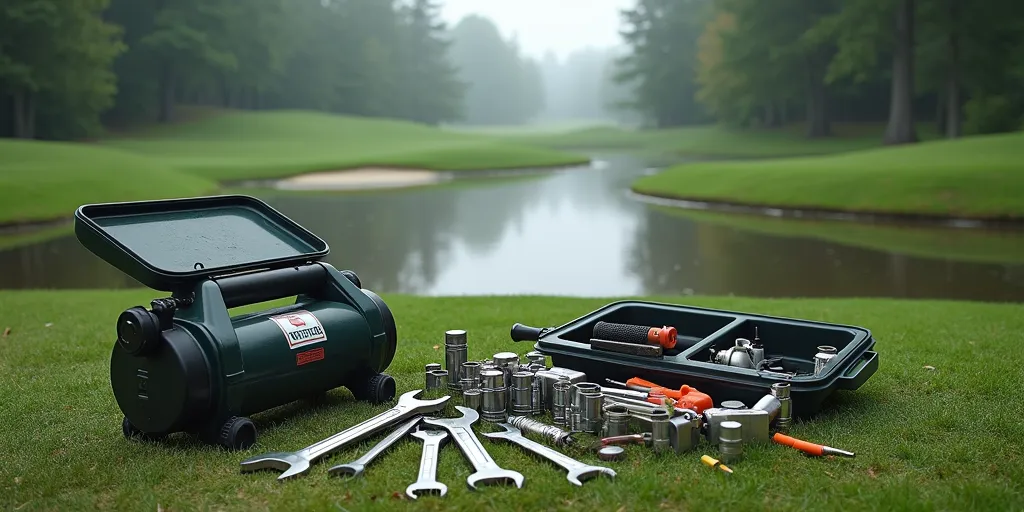-
Shopping Tools
-
Care & Maintenance
-
About
-
Dealer Login

Repairing a flooded golf cart requires careful attention to avoid further damage. Flooding can harm the cart's electrical system, battery, and motor. This guide outlines the steps to repair a flooded golf cart, ensuring you can safely restore your cart to working order.
Golf carts can become flooded for various reasons, such as driving through deep puddles or heavy rain. Water can enter the cart’s components, especially the battery, electrical wiring, and motor, potentially causing significant damage if not addressed quickly. It’s crucial to act swiftly and properly when repairing a flooded golf cart to minimize damage and prevent costly repairs.
Here’s how to repair a flooded golf cart and restore it to working condition:
The first and most important step when dealing with a flooded golf cart is to disconnect the power. This prevents the possibility of electrical shorts and further damage. For an electric golf cart, turn off the power switch and disconnect the battery terminals, ensuring you isolate the electrical system completely. If the cart is gas-powered, make sure to turn off the fuel supply and remove the spark plug to prevent the engine from accidentally firing.
Once the power is disconnected, you’ll need to drain any water from the cart. Tilt the cart carefully to allow water to exit from the low points, particularly around the motor, battery compartment, and undercarriage. If possible, use a shop vac or pump to help remove the water from the interior areas. Ensure that all water is drained out to avoid corrosion of sensitive components.
After draining the water, thoroughly dry all the wet components. Use towels or rags to absorb as much water as possible, and then let the cart air-dry for at least 24 hours in a dry, well-ventilated area. Pay special attention to the battery compartment, motor, and wiring. You can also use a hairdryer or heat gun (on a low setting) to speed up the drying process, but be cautious not to damage any components with excessive heat.
Once the cart is dry, carefully inspect all components, especially the electrical system, motor, and battery. Here’s what you need to check:
Once you have inspected and replaced any damaged parts, you can reconnect the power. For electric carts, reattach the battery terminals and ensure that all connections are secure. If you have a gas-powered cart, reconnect the fuel line and check that the spark plug is properly installed.
After reconnecting the power, turn on the golf cart and test it. Start slowly and check for any irregularities in performance. If the cart runs smoothly without issues, you’ve successfully repaired it. However, if you notice unusual noises, difficulty starting, or other problems, you may need to revisit the troubleshooting process or seek professional help.
If you’re unsure about any step or encounter issues that you can’t fix on your own, it’s a good idea to seek professional help. A certified golf cart mechanic or technician can perform a more thorough inspection and repair any complex electrical or mechanical issues that may have been caused by the flooding.
When repairing a flooded golf cart, there are several important considerations to keep in mind:
Repairing a flooded golf cart is a detailed process that requires patience and attention to detail. By following the steps outlined above, you can restore your golf cart to working condition and prevent further damage. Always ensure that you properly inspect and clean all parts, especially the electrical components, and replace any damaged parts to maintain the cart’s performance.
